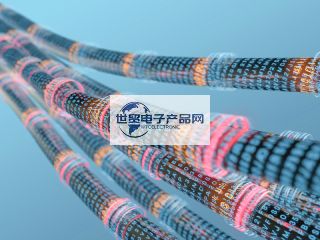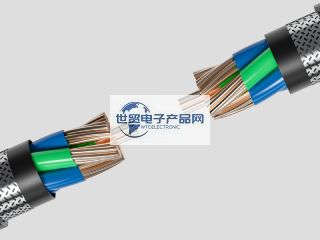Categorization:Product Information
New fiber optic cables, advanced modulation technologies, and upgraded high-density multi-fiber connectors mean we may be closer to the Shannon Limit than ever before. In terms of high-speed data transmission, scientists continue to look for copper clad laminates and cables that can reduce signal attenuation, distortion and sensitivity to external interference. For a long time, optical fiber will replace copper cable, and advanced signal conditioning, multi-segment modulation, and error correction technologies have enabled engineers to design twinax copper cable to run 112 Gb/s/s, far beyond what was expected just a few years ago. Each technology has its limitations, and high-speed copper channels may be approaching the limits imposed by the laws of physics. Attenuation reduces the effective channel length as the bandwidth requirement increases. Fiber optic links offer high bandwidth capacity in addition to very low attenuation, making them an attractive alternative. Long-distance communication lines have been taking advantage of fiber optics for many years. Among them, the power consumption, cost and internal optical fiber interconnection required by the photoelectric conversion process are the main problems. The development of silicon photonics and the properties of optical fibers have changed this situation. Optical fibers are generally classified as multimode and single mode. Using low-cost LED light sources, multimode fibers can transmit multiple modes of light. Single-mode fiber generally uses modulated laser, but its characteristic is that it greatly increases the coverage and bandwidth. Currently, inexpensive plastic optical fibers are used for relatively short, low data rate applications. The International Organization for Standardization (ISO) has adopted the OM1-5 series designation to regulate the performance of fiber optic cables. Fiber optics have undergone a process of continuous improvement in terms of bandwidth, strength, reduced attenuation, ease of installation, and reduced cost. In the early stage, the optical cable is prone to signal attenuation and breakage due to roughness or sharp bends. New single-mode and multimode fibers extend the range of bend radii. The glass used to form the light guide continues to be optimized to reduce scattering loss, dispersion, polarization mode dispersion, and microbend attenuation. The output of existing optical cable is 1550m, and the attenuation length is only 0.15 dB/km. The rise of parks and metro data centers is a new trend. The 100 km long optical communication link with large capacity has become a key condition for the operation of large-scale network systems. Optical link capacity improves cost efficiency and effectively supports the exponential growth of network traffic.

---------------------------------------------------------------------------------------------------
One solution is to use multicore fibers. In one optical fiber, multi-core optical fiber can transmit different signals at the same time, so the data transmission density of single-core optical fiber can be improved. Advanced, very high fiber density cables are entering the market to support continued growth in traffic. Furukawa recently installed 6,912 fibers in a 1.25-inch diameter pipe between two North American data centers. Hollow core fibers are another interesting variant. Light does not travel through glass or plastic, but through an air core. Improvements in product manufacturing have reduced loss and delay characteristics, making hollow fibers very attractive for applications requiring the transmission of extremely short pulses or minimally delayed light or data. Active Optical Fiber Cables (AOCs) are favored for their ability to extend the capabilities of traditional copper cable assemblies. Through a standard copper interface, the signal is converted into an optical pulse in the connector strain relief and coupled onto the optical fiber. And this is the opposite process. As far as that install is concerned, the reach of the cable is increase and the volume of the cable is reduced. Intense fiber features internal strength and a rugged outer jacket for use in harsh military, avionics, and industrial applications. Fiber packaging options continue to expand to include flat belt configurations that simplify routing and reduce resistance to cooling airflow. High-density, multi-fiber MPO and MXC connectors can terminate up to 72 fibers. To meet the growing demand for network capacity, engineers can improve the efficiency of existing fiber infrastructure by laying more fiber. Parallel optical technology provides an alternative to single wire or fiber. A transmitter at one end communicates with a receiver at the other end to transmit a data stream over multiple optical fibers. Configured in this way, the parallel optical link is capable of transmitting 10 Gb/s signals using four 2.5 Gb/s transmitters. Compared with monochromatic light, monochromatic light can also transmit multiple data streams simultaneously on the same optical fiber. The sender's multiplexer encodes multiple streams of data at different frequencies, which are embedded in an optical beam and coupled into an optical fiber. And vice versa. At the receiving end of the channel. Two optical signals can be transmitted by one optical fiber. Up to 80 data channels can be multiplexed onto a single optical fiber, which is capable of multiplexing onto a single optical fiber. Advanced modulation techniques enable designers to further improve the optical transmission chain. Quadrature amplitude modulation (QAM) combines multiple layers of amplitude and phase variation to improve the capacity of optical data communication links. Coherent modulation is the most robust and effective method for optimizing optical data transmission by combining amplitude and phase, polarization and polarization. The method combines four horizontal amplitude modulation and phase modulation as well as vertical and horizontal optical polarization techniques to maximize the data capacity of a single fiber. This technology is used in the next generation of 800Gb links. Both technologies push the capabilities of fiber optics to new heights. The industry is approaching the theoretical limit of a single communication channel. The Shannon limit was introduced in 1948 and is the maximum calculated error-free data rate. Just a few years ago, people were less concerned about the capacity of existing optical channels. A number of trends are driving high-speed data links, including the growth of super data centers, the migration of computing resources to the edge, the continued adoption of 5G, and the extension of fiber to the home. The combination of fiber performance and advanced modulation techniques with improved high-density multi-fiber connectors provides a roadmap for future high-speed computing and communications.

---------------------------------------------------------------------------------------------------
2、 on the World Trade Electronic Products Network Platform and Sales Product Profile: World Trade Electronic Products Network-professional agent/production/sales of various { connector | harness | cable products }; If you have relevant [connector | harness | cable products] procurement/purchase needs or want to buy/know what connector | harness | cable products solutions we can provide, please contact our business personnel below; if you have relevant [connector | harness | cable products] sales/resources and promotion needs, please click "Business Cooperation ←" to negotiate with the specialist!